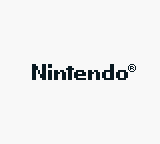The current URL is datacrystal.tcrf.net.
Nintendo Game Boy: Difference between revisions
m (rv spam) |
Lelegofrog (talk | contribs) mNo edit summary |
||
| (16 intermediate revisions by 9 users not shown) | |||
| Line 1: | Line 1: | ||
The '''Nintendo Game Boy''' was a handheld game console | {{Bob | ||
|bobscreen= GB_Bootstrap_ROM-title.png | |||
|developer= Nintendo | |||
|publisher= Nintendo | |||
|japan= {{date|1989|April|21}} | |||
|usa= {{date|1989|July|31}} | |||
|europe= {{date|1990|September|28}} | |||
|korea= {{date|1991|May|2}} (Hyundai Mini Comboy) | |||
<!--|aus= Find --> | |||
|console= y | |||
}} | |||
The '''Nintendo Game Boy''' was a handheld game console based on a custom Sharp Z80 processor. It used ROM cartridges for gameplay. | |||
Game Boy | ==Games== | ||
* [[:Category:Game Boy games|Games for this system]] | |||
[[Game Boy | ==Hardware== | ||
* [[Nintendo Game Boy/Hardware information|Hardware information]] | |||
==Emulators== | |||
* BGB | |||
* Bizhawk | |||
* Gambatte | |||
* Gearboy | |||
* KiGB | |||
* Visual Boy Advance | |||
For emulation accuracy, Bizhawk, Gambatte and BGB should be preferred. | |||
= | ==ROM Images== | ||
Game Boy ROM images usually have the extension ''.GB'' | |||
==History== | |||
The Nintendo Game Boy system was released in 1988 after Nintendo's successful Game & Watch systems. These differed in the fact that the Game Boy system had completely interchangeable games, whereas the older Game & Watch systems had but one for each console. This immediately brought on fandom to the Game Boy, despite the Sega Game Gear, already on the market, being in color. The Nintendo range of games included the ever popular Mario Brothers, Pokemon, Zelda and Tetris and boasted a new feature; the link port. This port could potentially link up to four Game Boy systems together, encouraging fighting and trading between games. However, this function was never taken beyond the standard two Game Boy link. | |||
[[Category:Consoles|Nintendo | In 1998, ten years after the original Game Boy release, and two years after the Game Boy Pocket (a smaller, AAA-battery-using version of the now-bulky Game Boy) Nintendo released a new version, the Game Boy Color. Due to this new version, and having no competition throughout the entirety of its lifetime, the Game Boy Color sold extremely well, helped by color (DX) versions of old favorites and new. The Game Boy Color itself was backwards compatible with all older model Game Boy games, a trend that would continue for some time albeit not quite as well, and such was a reason to completely upgrade from the older versions. | ||
==External Links== | |||
[http://gbdev.gg8.se/wiki/articles/Test_ROMs Emulators accuracy tests] | |||
[[Category:Consoles|Nintendo,handheld,1989]] | |||
[[de:Gameboy]] | [[de:Gameboy]] | ||
Latest revision as of 12:45, 7 March 2024
| Nintendo Game Boy |
|---|
|
Developer: Nintendo |
The Nintendo Game Boy was a handheld game console based on a custom Sharp Z80 processor. It used ROM cartridges for gameplay.
Games
Hardware
Emulators
- BGB
- Bizhawk
- Gambatte
- Gearboy
- KiGB
- Visual Boy Advance
For emulation accuracy, Bizhawk, Gambatte and BGB should be preferred.
ROM Images
Game Boy ROM images usually have the extension .GB
History
The Nintendo Game Boy system was released in 1988 after Nintendo's successful Game & Watch systems. These differed in the fact that the Game Boy system had completely interchangeable games, whereas the older Game & Watch systems had but one for each console. This immediately brought on fandom to the Game Boy, despite the Sega Game Gear, already on the market, being in color. The Nintendo range of games included the ever popular Mario Brothers, Pokemon, Zelda and Tetris and boasted a new feature; the link port. This port could potentially link up to four Game Boy systems together, encouraging fighting and trading between games. However, this function was never taken beyond the standard two Game Boy link.
In 1998, ten years after the original Game Boy release, and two years after the Game Boy Pocket (a smaller, AAA-battery-using version of the now-bulky Game Boy) Nintendo released a new version, the Game Boy Color. Due to this new version, and having no competition throughout the entirety of its lifetime, the Game Boy Color sold extremely well, helped by color (DX) versions of old favorites and new. The Game Boy Color itself was backwards compatible with all older model Game Boy games, a trend that would continue for some time albeit not quite as well, and such was a reason to completely upgrade from the older versions.
External Links
- Pages missing developer references
- Games developed by Nintendo
- Pages missing publisher references
- Games published by Nintendo
- Pages missing date references
- Games released in 1989
- Games released in April
- Games released on April 21
- Games released in July
- Games released on July 31
- Games released in 1990
- Games released in September
- Games released on September 28
- Games released in 1991
- Games released in May
- Games released on May 2
- Pages without TCRF links
- Consoles
